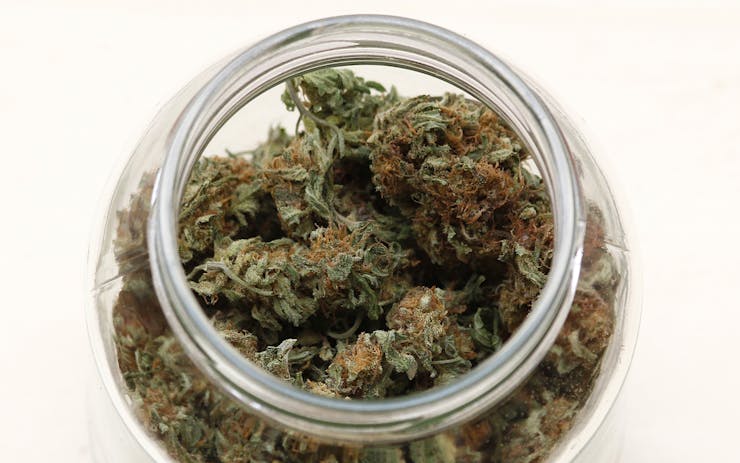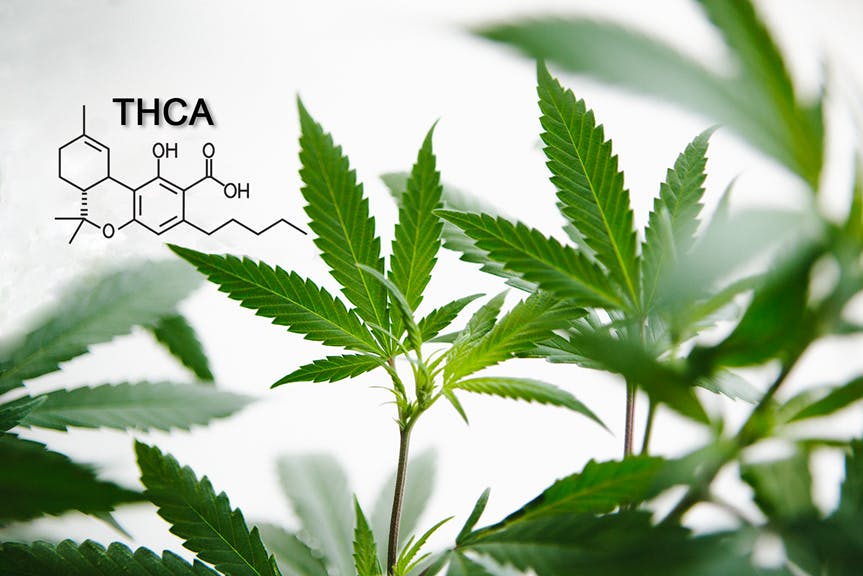Cannabis is perishable, meaning that at some point your prized bag of fresh flowers is going to punch out its time card and expire. What was once a vibrant green, fresh-smelling sack of cannabis buds will eventually all but lose those pungent aromas as well as that vibrant hue. Furthermore, your fluffy buds will at some point crisp up and dry out, leaving you with a pretty dismal product. Such is the nature of degradation, and your cannabis must play by the same rules as any other harvested crop.
Fortunately, the factors that influence the degradation of cured cannabis flowers are easy to understand and relatively simple to control.
Cannabis Freshness is Limited After It’s Harvested

As soon as a cannabis plant has been harvested, it begins to degrade. Not only is the plant itself no longer alive and receiving nutrients from the root ball it was once attached to, the cannabinoid biosynthetic pathways have been disrupted as well. In this process, cannabinoids and terpenes synthesize into other compounds, subsequently altering their psychoactive properties. For example, temperature has the ability to cause THCA to decarboxylate and become THC (which is highly psychoactive), but heat and light can cause THC to degrade to CBN over time as well.
Once a cannabis plant has been harvested, dried, and cured, its optimal freshness zone becomes a finite window that can be extended only by carefully controlling various elements that include not only temperature and relative humidity, but also UV exposure and ambient oxygen levels.
How Temperature Impacts Cannabis Degradation

Temperature can affect the degradation of cannabis in several ways. Ideally, cannabis should be stored at temperatures not to exceed 70F degrees. Any higher and this begins to introduce an environment conducive to bacterial and mold growth within your flowers.
Furthermore, volatile monoterpenes begin to polymerize at surprisingly low temperatures, meaning that the flavor and aromatic profile of your cannabis flowers could change as well. When exposed to prolonged high temperatures, cannabinoids begin to decarboxylate and/or degrade. THCA will first lose its carboxyl ring in this process, converting it to THC, which can eventually degrade to CBN through prolonged exposure to elevated temperatures.
Conversely, cannabis kept too cold, in a freezer for instance, can risk elevating levels of relative humidity, which can force moisture to the surface of a plant and thus break down trichomes in the process.
How Humidity Impacts Cannabis Degradation

High relative humidity in and of itself can affect cannabis degradation by introducing high levels of moisture back into the flowers. Harvested cannabis experiences a rapid slowing of fluid transfer during the drying and curing phase. Optimally, cannabis should be stored with a relative humidity in the 59-63% range to avoid adverse degradation in either direction.
With the reintroduction of high amounts of moisture, cannabis flowers not only risk mold but can also bring along ammoniated flavors due to the restricted air circulation. On the other end, low humidity can negatively impact cannabis degradation by drying leaves and foliage out, causing them to become brittle and fragile.
How UV Light and Oxygen Impact Cannabis Degradation

Where temperature and humidity are both highly influential to cannabis degradation, high exposure to UV light and oxygen can perhaps cause the highest rates of degradation in the shortest time frame. UV rays can break down organic matter at a rapid rate, causing cannabinoid degradation and loss to occur. This process can only be slowed by limiting light exposure to cured flowers.
Elevated exposure to oxygen can also cause rapid cannabinoid degradation. THC, when left in highly oxidized environments, will convert more rapidly to CBN, which is why it’s important to control both oxygen levels and RH when curing cannabis buds.
To summarize, temperature, humidity, airflow, and light are the four major factors that influence the degradation of cannabis. All four variables represent a spectrum that harvested cannabis flowers teeter on. Controlling these variables and maintaining their proper levels can significantly prolong the shelf life of your cannabis flowers by limiting exposure to the processes that influence the degradation of not only the floral clusters themselves, but the cannabinoids and terpenoids contained within them.
Although cannabinoid degradation is an inevitability and your cannabis will eventually expire, maintaining a highly controlled environment is the best way to combat the natural processes that will render your stash undesirable, leaving you with fresh flowers for longer than you may have previously anticipated.






